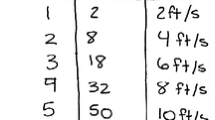Abstract
In this article, the actual impact on students' instructional and epistemological beliefs of systematic attempts to implement a problem‐based, collaborative and technologically‐rich learning environment in regular, internationally‐spread, secondary school classrooms is described. Although the literature suggests that learning environments do affect both categories of beliefs, empirical evidence is currently limited. To study the effects of learning environments, classroom‐based learning environments were redesigned in various respects. The change entailed the implementation of a problem‐based, collaborative and technologically‐rich environment to replace the more regular content‐driven, teacher‐centred and textbook‐based environment. The implementation of the innovation was hypothesised to result in a change of both the instructional and epistemological beliefs of students. Moreover, these beliefs were expected to evolve in the direction of the assumptions underlying the innovative environment. A classical pretest and posttest study resulted in the confirmation of the first hypothesis. However, for the second hypothesis, the opposite was found: students' beliefs strengthened in a direction that contradicts the basic principles underlying the designed environment. The study highlights that a poor implementation of potentially powerful learning environments can result in unexpected and even undesirable side effects.
Similar content being viewed by others
REFERENCES
Alexander, P. A., Schallert, D. L., & Hare, V. C. (1991). Coming to terms: How researchers in learning and literacy talk about knowledge. Review of Educational Research, 61, 315–343.
Atkinson, J. W., & Feather, N. T. (Eds.). (1966). A theory of achievement motivation. New York: Wiley.
Bendixen, L. D., Dunkle, M. E., & Schraw, G. (1994). Epistemological beliefs and reflective judgements. Psychological Review, 75, 1595–1600.
Billet, S. (1996). Situated learning: Bridging sociocultural and cognitive theorising. Learning and Instruction, 6, 263–280.
Braverman, M. T. (1996). Sources of survey error: Implications for evaluation studies. New Directions for Evaluation, 70, 17–28.
Clarebout, G., & Elen, J. (Eds.). (2000). X-rays of the ParlEuNet-project (Deliverable 5.2 Report of research results on cognitive processes). Leuven, Belgium: K.U.Leuven/ C.I.P. &T.
Clark, R. E. (1990). When teaching kills learning: Research on mathemathentics. In H. Mandl, E. De Corte, S. N. Bennet, & H. F. Friedrich (Eds.), Learning and instruction: European research in an international context, Volume 2:2 (pp. 1–22). Oxford, UK: Pergamon.
Davis, E. (1997, March). Students’ epistemological beliefs about science and learning. Paper presented at the annual meeting of the American Educational Research Association, Chicago.
de Heus, P., van der Leeden, R., & Gazendam, B. (1995). Toegepaste data-analyse [Applied data analysis]. Utrecht, The Netherlands: Lemma.
Dochy, F. J. (1992). Assessment of prior knowledge as a determinant for future learning. Utrecht, The Netherlands: Lemma.
Elen, J., & Clarebout, G. (1998). Learning about the European parliament. Leuven, Belgium: Centre for Instructional Psychology and Technology.
Elen, J., & Lowyck, J. (1998). Students’ view on the efficiency of instruction: An exploratory survey of the instructional metacognitive knowledge of university students. Higher Education, 36, 231–252.
Elen, J., & Lowyck, J. (1999). Metacognitive instructional knowledge: Cognitive mediation and instructional design. Journal of Structural Learning and Intelligent Systems, 13, 145–169.
Elen, J., Lowyck, J., & Proost, K. (1996). Design of telematic learning environments: A cognitive mediational view. Educational Research and Evaluation: An International Journal on Theory and Practice, 2, 213–230.
Hannafin, M. J., Hannafin, K. M., Hooper, S. R., Rieber, L. P., & Kini, A. S. (1996). Research on and research with emerging technologies. In D. H. Jonassen (Ed.), Handbook of research for educational communications and technologies (pp. 378–402). New York: Macmillan.
Higgins, K. M. (1997). The effect of year-long instruction in mathematical problem-solving on middle-school student's attitudes, beliefs, and abilities. Journal of Experimental Education, 7, 88–140.
Jacobson, M. J., Maouri, C., Mishra, P., & Kolar, C. (1996). Learning with hypertext learning environments: Theory, design and research. Journal of Educational Multimedia and Hypermedia, 5, 239–281.
Jonassen, D. H. (1996). Computers in the classroom: Mindtools for critical thinking. Englewood Cliffs, NJ: Prentice Hall.
Kumar, V. S. (1996). Computer supported collaborative learning: Issues for research. Available: http://www.cs.usask.ca/grads/vsk719/academic/890/project2/project2.html.
Lave, J., & Wenger, E. (1991). Situated learning: Legitimate peripheral participation. Cambridge, UK: Cambridge University Press.
Lonka, K., & Lindblom-Ylänne, S. (1996). Epistemologies, conceptions of learning, and study practices in medicine and psychology. Higher Education, 31, 5–24.
Mandl, H., & Prenzel, M. (1991). Designing powerful learning environments: A constructivist perspective. In J. Lowyck, P. De Potter, & J. Elen (Eds.), Instructional design: Implementation issues. Proceedings of the I.B.M./K.U.Leuven Conference (pp. 69–90). La Hulpe/Leuven, Belgium: IBM/K.U.Leuven.
McKay, R. B., Breslow, M. J., Sangster, R. L., Gabbard, S. M., Reynolds, R. W., Nakamoto, J. M., & Tarnai, J. (1996). Translating survey questionnaires: Lessons learned. New Directions for Evaluation, 70, 93–104.
Paulsen, M. B., & Wells, C. T. (1998). Domain differences in the epistemological beliefs of college students. Research in Higher Education, 39, 365–384.
Perry, W. G. (1970). Forms of intellectual and ethical development in the college years: A scheme. New York: Holt, Rinehart & Winston.
Pintrich, P. R., Marx, R. W., & Boyle, R. A. (1993). Beyond cold conceptual change: The role of motivational beliefs and classroom contextual factors in the process of conceptual change. Review of Educational Research, 63, 167–199.
Pressley, M., Borkowski, J. G., & Schneider, W. (1989). Good information processing: What it is and how education can promote it. International Journal of Educational Research, 13, 857–867.
Roblyer, M. D., Edwards, J., & Havriluk, M. A. (1997). Integrating educational technology into teaching. Upper Saddle River, NJ: Prentice-Hall.
Salomon, G. (1984). Television is ‘easy’ and print is ‘tough': The differential investment of mental effort in learning as a function of perceptions and attributions. Journal of Educational Psychology, 76, 647–658.
Schommer, M. (1990). Effects of beliefs about the nature of knowledge on comprehension. Journal of Educational Psychology, 82, 498–504.
Schommer, M. (1994). An emerging conceptualization of epistemological beliefs and their role in learning. In R. Garner & P. A. Alexander (Eds.), Beliefs about text and instruction with text (pp. 25–40.). Hillsdale, NJ: Lawrence Erlbaum.
Schommer, M. (1996, April). The development of epistemological beliefs among secondary students: A longitudinal study. Paper presented at the annual meeting of the American Educational Research Association, New York.
Schommer, M., Crouse, A., & Rhodes, N. (1992). Epistemological beliefs and mathematical text comprehension: Believing it is simple does not make it so. Journal of Educational Psychology, 84, 435–443.
Schommer, M., & Dunnell, P. A. (1997). Epistemological beliefs of gifted high school students. Roeper Review, 19, 153–156.
Schunk, D. H. (1991). Learning theories: An educational perspective. New York: Merrill.
Simons, P. R. (1990). Transfervermogen (Rede uitgesproken bij de aanvaarding van het ambt van gewoon hoogleraar in de interdisciplinaire onderwijskunde, in het bijzonder de onderwijsverbetering) [Transfer ability (Address uttered as part of the acceptance of the professorship in interdisciplinary educational sciences, educational optimisation)]. Nijmegen, The Netherlands: Catholic University of Nijmegen.
Snow, R. E., & Swanson, J. (1992). Instructional psychology: Aptitude, adaptation, and assessment. Annual Review of Psychology, 43, 626.
Spiro, R. J., Feltovich, P. J., Jacobson, M. J., & Coulson, R. L. (1988). Cognitive flexibility theory: Advanced knowledge acquisition theory in ill-structured domains. In Tenth Annual Conference of the Cognitive Science Society (pp. 375–383). Hillsdale, NJ: Lawrence Erlbaum.
Stevens, J. (1996). Applied multivariate statistics for the social sciences (3rd ed.). Mahwah, NJ: Lawrence Erlbaum.
Sugrue, B. (1994, April). A theory-based framework for assessing domain-specific problem solving ability. Paper presented at the annual meeting of the American Educational Research Association, New Orleans, LA.
Tacq, J. (1997). Multivariate analysis techniques in social science research. London: Sage Publications.
Tynjäla, P. (1997). Developing education students’ conceptions of the learning process in different learning environments. Learning and Instruction, 7, 277–292.
Vermunt, J. D., & Verloop, N. (1999). Congruence and friction between learning and teaching. Learning and Instruction, 9, 257–280.
Waldrip, B. G., & Treagust, D. F. (1995, April). Students’ perceptions of video-conferencing between two university campuses. Paper presented at the annual meeting of the American Educational Research Association, San Francisco.
Weinfurt, K. P. (1995). Multivariate analysis of variance. In L. G. Grimm & P. R. Yarnold (Eds.), Reading and understanding statistics (pp. 245–276). Washington, DC: American Psychological Association.
Winne, P. H., & Marx, R. W. (1982). Students’ and teachers’ view of thinking processes for classroom learning. The Elementary School Journal, 82, 493–518.
Author information
Authors and Affiliations
Rights and permissions
About this article
Cite this article
Elen, J., Clarebout, G. An invasion in the classroom: influence of an ill-structured innovation on instructional and epistemological beliefs. Learning Environments Research 4, 87–105 (2001). https://doi.org/10.1023/A:1011450524504
Issue Date:
DOI: https://doi.org/10.1023/A:1011450524504




